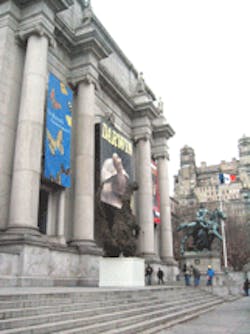World Touring Museum Exhibit Features Ground Water Thanks to Foundation Grant
Wells and ground water, thanks to a grant from the National Ground Water Research and Educational Foundation, will be an integral part of a traveling exhibit on water that will tour the world’s leading science museums.
The Foundation is a charitable entity affiliated with the National Ground Water Association.
The 7,000 square-foot exhibit, Water: H2O=Life, opens November 3 at its first stop, the American Museum of Natural History (AMNH) in New York City. After New York, the exhibit travels to the San Diego Natural History Museum, the Science Museum of Minnesota (SMM), Chicago’s Field Museum, the Great Lakes Science Center in Cleveland, and the Royal Ontario Museum in Toronto. The tour will also include destinations outside of North America.
The exhibit, which focuses on all sources of water, features live animals, hands-on exhibits, and immersive dioramas.
The ground water portion of the exhibit features “Porous Stones,” an exhibit component intended to help dispel the common misperception that ground water occurs largely as underground lakes, rivers, and “veins” of water. Visitors are encouraged to trickle water onto various rock samples to observe that some have sufficient porosity and permeability to permit water to enter and flow through them.
Also featured is a component that shows what may happen when two wells access the same aquifer. When water is pumped from one of the wells (by turning a hand crank), the pressure in the aquifer drops as a cone of depression spreads out until it reaches the recharge area of the aquifer, the discharge area, or both.
A third ground water component is featured in the three-dimensional GeoWall animation. It shows how ground water underneath Tucson, Arizona, has fluctuated during the past several decades in response to ground water pumping and recharge.
Major support for the exhibit was provided by the National Science Foundation, with leadership support from the Freshwater Society and the Tamarind Foundation in association with the Johns Hopkins Center for a Livable Future.
Source: National Ground Water Association
